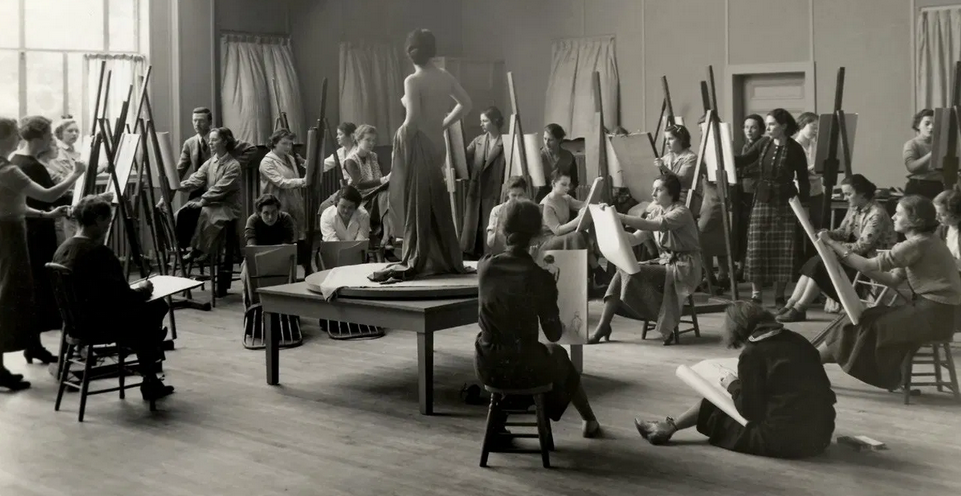The Most Important Qualities for a Life Model
Turn up on time; preferably, at least 5 minutes before starting time. Reliability is a virtue.
Be still. BE VERY STILL.
Create engaging poses with your whole body that you can sustain for the duration of the chosen length of time. Practice at home and see how long your body is comfortable holding different kinds of positions.
Keep it interesting by changing the direction you face after each pose. Alternate between low (reclining, couching), medium (bent over; sitting or leaning on a stool), and high (standing) poses.
Think about the ‘negative spaces’ around your body and the shapes you’re creating in it.
TWIST. Even if you’re just turning your head, a pose becomes more interesting when the focus of your figure is not all pointing in one direction. Being a good model requires understanding your own body and how it works.
How Do I Prepare for the First Modeling Session?
Attend a life drawing session and see what kind of poses are typical for a short and long-held position. Practice at home, making forms with your body that feel natural and right for you. Try remaining in the same pose for 5, 10, or 15 minutes. Life modeling can be challenging, but drawing a bad model is brutal.
Things to Bring
A robe for break time, and some foot-ware, also for the breaks.
A Typical Session
The Eugene Figure Drawing Group is 3 hours long with a 10-minute breaks. We will be doing 2 long poses with 20 minute sittings, moving back and forth between the 2 poses.
How Do I Hold Still That Long?
To be honest, it can get uncomfortable. Use the time to be calm, clear your mind, and don’t be distracted by movement or sounds around you. The less your mental agitation, the stiller your pose. Some models mentally count, write a grocery list, plan stuff for later, or quiet their minds into a meditative state.
What Do I Do If I’m in Pain or a Limb Falls Asleep?
Shift attention to something else. Suck it up. But, for real pain or numbness, announce to the group that you’re going to break form to stretch. When you return to position, ask the group to confirm you’re in the original place. Stretch your body during breaks.
Fainting/Passing Out/Falling Asleep
These are a possibility, and have happened. Solutions: Arrive well rested. Don’t lock your knees in standing poses. If you begin to feel faint or spacey, break the pose until you regain your composure.
How Do I Cancel a Session?
CALL IN ADVANCE with the person who booked you, as far ahead as possible. Many people may be inconvenienced if you don’t show up, so give plenty of time to schedule a different model.
Running Late?
CALL US, and let us know when you expect to arrive. Write down our contact number (ask for it via the Contact form on this site, if you don’t have it) and carry it with you for such emergencies.
The Bare Facts of Modeling
A misconception is that anyone can model. This can be challenging work. If you haven’t modeled before, ask yourself if you are comfortable with being naked in front of people who will be staring at you intently. Whilst we maintain a strict professional relationship between artist and model, there is the reality of you being unclothed in front of other people. If you are uncomfortable with this, this may not be the time to confront your insecurities.
You need patience and stamina to remain still for long periods of time. With practice, you will learn what positions are compromising for you, and what positions work best for you. Unfortunately, you never completely avoid pain and discomfort in this job.
Yes, modeling can be difficult, yet it is also very rewarding. It is a potential creative outlet for you, and you become the creative inspiration for many artists.
I Want to be a Life Model for the Eugene Figure Drawing Group
Prospective new models should contact Will Mitchell using the form under the Contact tab.
